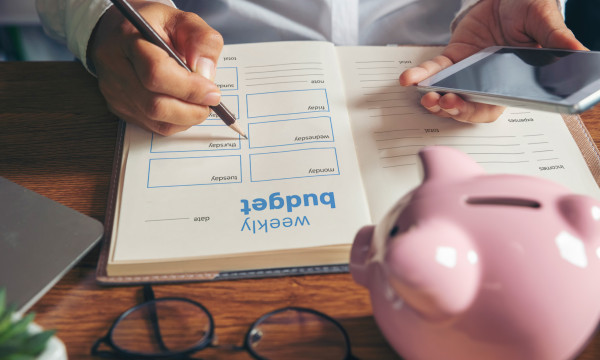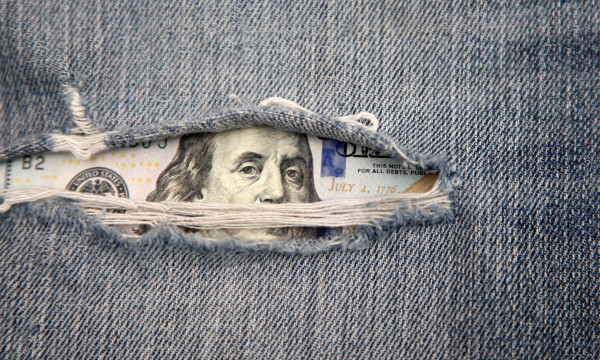Scam-free P2P
Using a P2P payment system? Follow these helpful dos and don’ts to help keep yourself (and your money) safe.

Peer-to-peer payments — also known as person-to-person or P2P — are a great way to send money to family, settle a restaurant bill with a friend, or pay your rent. With P2P technology, you’re able to electronically transfer funds directly from your bank account or credit card to another individual’s account. And because all you need is the other person’s mobile phone number or email address, it’s super convenient and doesn’t require you to share your actual account info.
There are several reputable P2P apps and platforms — Zelle®, PayPal, and Venmo are a few examples — and in today’s P2P payment era, it seems everyone is using one or more of these popular methods; unfortunately, that also includes scammers. That doesn’t mean you should avoid these methods of payment; rather, you should do what you can to be aware of trending scams, watch for common pitfalls, and take measures to prevent yourself from falling prey. To that end, we’ve put together some dos and don’ts to help you stay safe when going P2P.
Let’s start with the don’ts
Staying on top of the latest scams is crucial to using P2P payment technology safely. Our list of don’ts include tips for how not to fall for some of today’s popular scams.
Don’t fall for a puppy. Sadly, scammers are tugging on the heartstrings of those of us who have sought the companion of a pet during the pandemic, and puppy scams are the deception du jour. Puppy scammers post fake litters online, usually pretending to be a breeder with a great deal on an adorable puppy. They promise to ship the puppy after P2P payment is received, sometimes coming back to ask for additional money for vet bills or unexpected shipping fees, but then the “breeder” vaporizes — taking your nonexistent new puppy with them.
Don’t buy a ticket (or other online sale items). We’re all desperate to get out of the house, and we’re spending more time than ever online looking for great deals. And while events like sports, concerts, etc., may seem like welcome respite, some of those unbelievable prices truly are not to be believed. If you purchase a ticket via P2P and the seller vanishes, you’re out the ticket money and your chance for a night out. The same is true for online classified ads and retail “bargains” — you’ll want to proceed with caution and do your due diligence.
Don’t fall for fake check or romance scams. Those faux contests, debt management scams, and bogus refund checks we used to hear so much about? They’re still around, only they’re wearing better disguises, and the scammers are wanting their potential victims to use P2P to transfer “fees.” Unfortunately, the same is likely also true of those impossibly attractive people you may meet on an online dating site who suddenly find themselves in a scrape and need to borrow money (sometimes repeatedly!) via a P2P system. Same stuff, different day, and once that money is gone, it’s very hard to get back.
Don’t use P2P services to buy items. If an online retailer requires P2P payment and doesn’t offer any other option, it’s probably a scam. Once it’s gone, it may not be possible to get your money back or refunded, so proceed with extreme caution.
Now let’s tackle the dos
New scams pop up all the time, so it’s wise to exercise caution no matter what. Here are some things to do that can help you use P2P more safely.
Do use it with folks you know. Think of P2P payments as cash that you would only hand over to family and friends, or others you know well and trust — like your hairstylist, your lawn service, or your babysitter.
Do a double take. When you use a P2P payment platform, you’ll want to double- and triple-check the address, username, or phone number of your intended recipient. Getting the money back can be very difficult, or even impossible, if you make a mistake and it goes to the wrong person. When in doubt, consider sending a small amount first to double-check that it’s received by the right person.
Do change your security settings. Almost every popular P2P platform offers the ability to create a personal identification number (PIN) or enable another form of multifactor authentication. Once this extra layer of protection is enabled, a user will be required to enter it whenever they open the app. (Note: When using Zelle within UBTgo, you’ll already be protected through multifactor authentication, our existing layer of extra security.) We also recommend you sign up for our fraud alert texts and emails to help keep you in the loop.
In summary, there’s no reason to swear off P2P — it’s the ultimate in convenience, and it’s super safe when used as intended: to transfer money to folks you know and sources you have reason to trust. If you're looking to get started with P2P, Zelle is available directly in your UBTgo app. Zelle also offers some great blog articles on how to stay safe. Click through to learn more about understanding fraud and scams, using Zelle safely, and other resources and tips.
Learning Center articles, guides, blogs, podcasts, and videos are for informational purposes only and are not an advertisement for a product or service. The accuracy and completeness is not guaranteed and does not constitute legal or tax advice. Please consult with your own tax, legal, and financial advisors.




